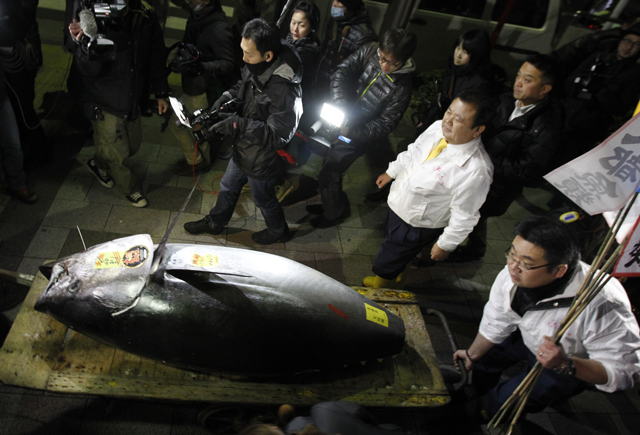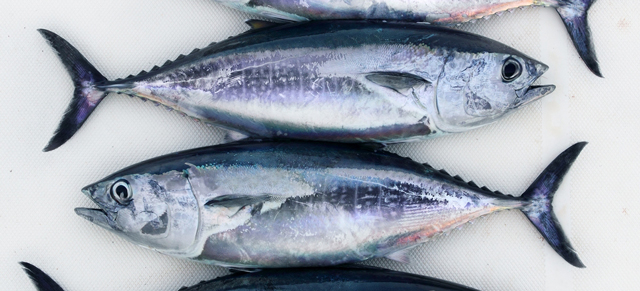The bluefin tuna is a magnificent creature. A silvery torpedo, it grows as big as 453kg, swims as fast as cars, and survives the cold waters of the ocean, weirdly enough, as warm-blooded fish. Oh, it also happens to be pretty tasty as sushi. Thanks to our growing sushi appetites, the bluefin tuna seems likely to be obliterated off the face of the Earth unless we do something drastic — like stop eating it or, what the hell, use science to start spawning them in tanks on land.
Aquaculture has been increasingly touted as how we still feed our growing world. But the Atlantic bluefin tuna presents from real challenges — like, say, how we haven’t been able to get its larvae to survive for more than a few weeks. But Yonathan Zohar, the scientist in charge of the plan to farm Atlantic bluefin, is the guy for the job. You might say he is an OB-GYN for fish, and he’s already reversed engineered the reproductive cycle of one now popularly farmed fish, the sea bass.
I first encountered Zohar’s name while reading Paul Greenberg’s excellent book Four Fish. In it, Greenberg recounts how Zohar painstakingly picked through the brains of tens of thousands of fish for their pituitary glands to study fish hormones. The first samples back from the lab “degraded.” So Zohar and his team picked through another ten thousand pituitary glands, only to get the same result.
Zohar eventually realised the samples were not degraded. Instead, a massive spike in an unknown hormone produced only during spawning had confused the lab. Eureka! Right? Not quite, as Greenberg notes, injecting this new hormone into female sea bass did nothing because an enzyme in the fish immediately broke it down. Sea bass also tend to slowly drop their eggs over days. In the end, Zohar came up with something wholly new and weird: a tiny plastic sphere of hormones implanted into fish, slowing releasing the hormone so all the sea bass spawn at once.

A bluefin tuna sold at the Tsukiji fish market in 2013. The 222kg fish netted $US1.76 million. With that kind of money, you can see the incentive to farm bluefin tuna. AP Photo/Shuji Kajiyama
I mention this whole decades-old episode with sea bass to illustrate how insanely difficult it is to farm a new species. When we think about aquaculture, it’s easy to think about tanks and pens and water filtration systems. But before we even build places for fish to grow, we have to figure out how to make more of them. To get bluefin tuna to spawn, scientists have tried getting scuba divers to shoot hormone implants into the fish with spear guns.
Zohar currently works at the University of Maryland Baltimore County’s Institute of Marine and Environmental Technology, where he’s coaxing bluefin tuna larvae to survive in tanks. “The vision is to have huge tanks, land-based, in a facility like what you see here, having bluefin tuna that are spawning year-round, on demand, producing millions of eggs,” he tells NPR. So far, he’s only getting a fraction of larvae to survive more than 10 days. One problem is that the delicate, head-heavy larvae keep sinking head first in the tanks.
All reproductive challenges aside, bluefin tuna are also not the most logical fish to domesticate given their size and carnivorous appetites. Farming bluefin tuna would arguably be terrible for the environment as well. The tuna requires 7kg of fish as food to produce 450g of tuna. The real way to save the bluefin tuna without wrecking havoc on the environment may not be a technical one at all. It might just be what we don’t want to hear: stop eating it.
Picture: holbox/shutterstock
